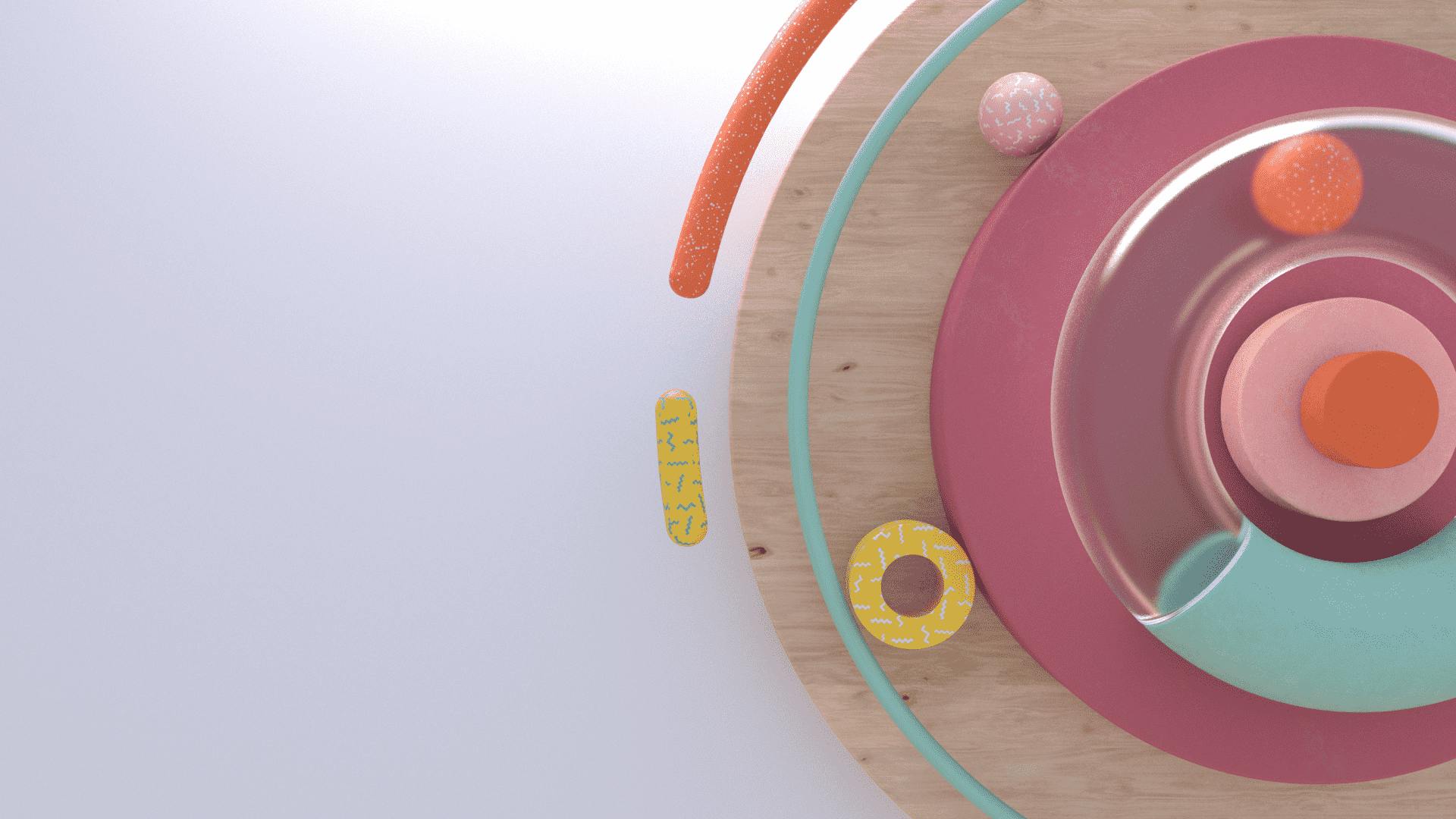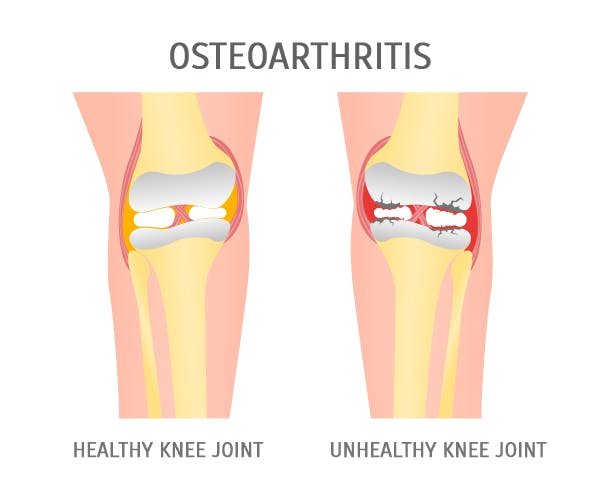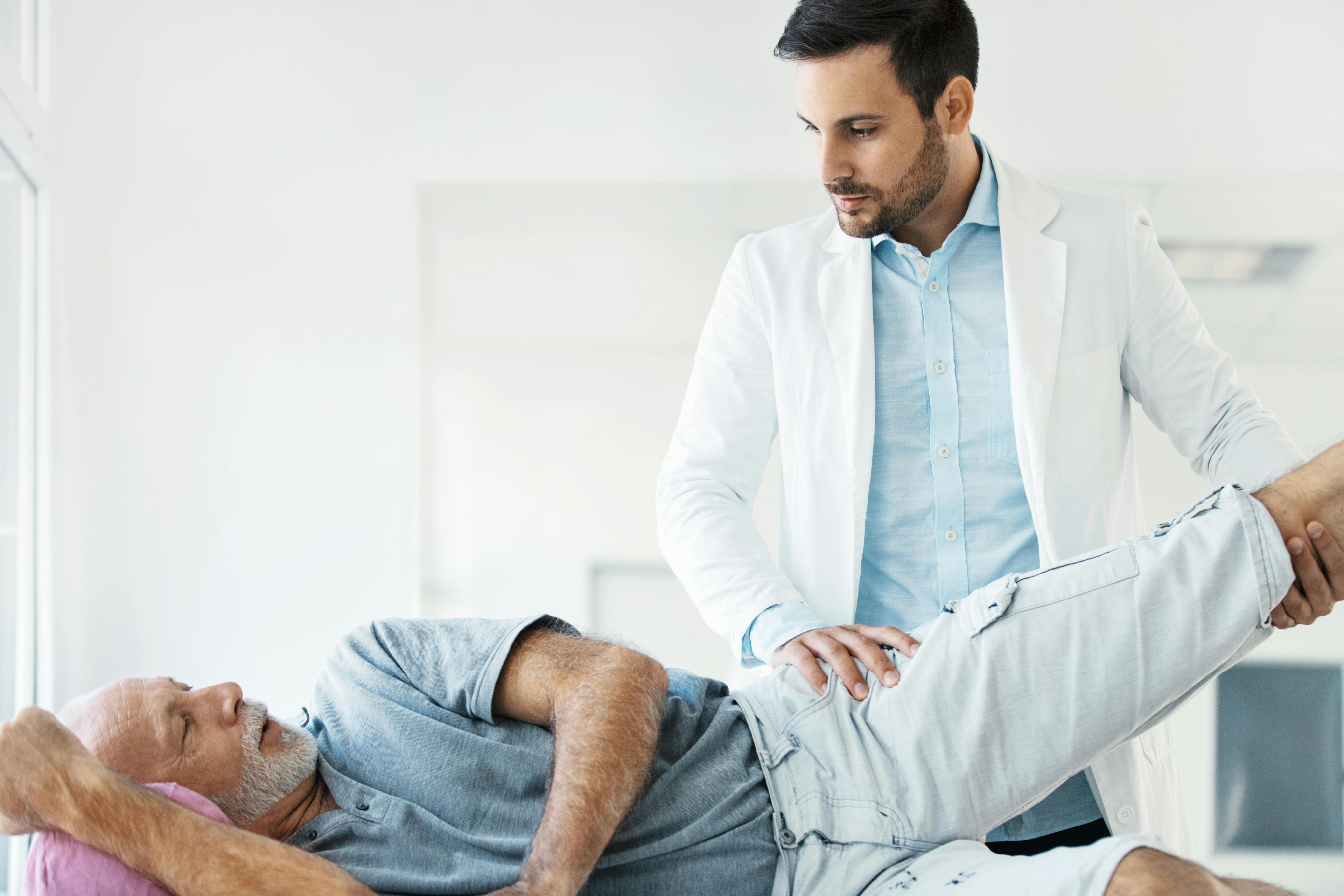
Osteoarthritis & Exercise
Osteoarthritis, sometimes referred to as OA, is a common condition that affects our joints, causing pain, swelling, and stiffness.
Learn how to best manage osteoarthritis of the hip and knee with exercise. Reduce your symptoms and improve your mobility.
Lesson Outline
Osteoarthritis, sometimes referred to as OA, is a common condition that affects our joints, causing pain, swelling, and stiffness.
By taking this short, interactive lesson, you will learn the answers to the following questions:
• How common is OA of the hip and knee?
• Is it a normal part of aging?
• How can you best manage the symptoms of OA with a lifestyle plan that includes exercise?
• What kinds of exercises and physical activities should you be doing?
• What role does managing your weight play in an effective self-management plan?
Meet Cynthia and Joe and learn what changes they made to reduce their osteoarthritis symptoms and improve their quality of life.
(Estimated time to complete - 15 minutes)
Start LessonWhat is osteoarthritis?
Osteoarthritis is a condition that affects our joints, causing pain, swelling, and/or stiffness. We have joints throughout our bodies. They are the places where bones meet so you can bend and move. Knees, hip, and hands are the joints most commonly affected by this type of arthritis.
It is sometimes called degenerative joint disease. This kind of arthritis wears away the cartilage that covers the ends of each bone in a knee or hip, so it is often described as a "wear and tear" disease.
The job of the cartilage is to act as a cushion between the bones and to join tissue together in the knee or hip. If you have osteoarthritis, the cartilage or cushion becomes rough and might even wear away altogether. The bones then rub against one another, causing pain and slowing down or stopping movement such as walking, climbing stairs, and bending down. Sometimes, you may hear a grating sound when the bones rub together. You may also experience stiffness and swelling around a joint.
Currently, there is no cure for osteoarthritis. Drug treatments have only modest benefits on pain and function, with significant potential side effects.
How do you know if you have it?
If you have persistent pain, aching, or stiffness of your knees or hips when you move them that is not a result of a recent injury, then you should see your health care professional for an assessment. Osteoarthritis tends to get worse with time and can make it challenging to perform day-to-day activities as we age.
To make a diagnosis, your health care provider will take a history asking about your symptoms and give you a physical exam. Generally, if you are 40 years or older, you won’t need an x-ray or other types of imaging to confirm a diagnosis.
The Team
Anthony J. Levinson, MD, MSc, FRCPC
Neuropsychiatrist, Associate Professor; Faculty of Medicine, McMaster University
Janie Wilson, PhD
Professor, Department of Surgery, McMaster University
Oren Cheifetz, PhD, BSc. PT
Assistant Clinical Professor, Rehabilitation Science, Faculty of Health Sciences, McMaster University
Angela Accettura, BSc. PT
Advanced Practice Physiotherapist, Hamilton Health Sciences
Alfred A. Cividino, MD, FRCPC, FACR
Professor & Director, Division of Rheumatology, McMaster University
About this Project
The latest scientific evidence on this topic was reviewed and assessed for accuracy by our team of experts in osteoarthritis and exercise. There are no conflicts of interest. This resource was first published on March 12, 2020.
Lesson References
- Prevalence of osteoarthritis, by age group and site of joint pain, household population aged 20 or older diagnosed with arthritis, Canada excluding territories. Statistics Canada, 2009. Date Modified: 2015-11-27.
- Osteoarthritis, Care for Adults with Osteoarthritis of the Knee, Hip or Hand - Patient Reference Guide, Health Quality Ontario.
- Knee Exercises, Hip Exercises, and Standing Exercises, Patient Education Handouts, Hamilton Health Sciences Corporation, 2005.
- Arthritis Facts and Myths, Public Health Agency of Canada, 2010.
- Handbook for Canada’s Physical Activity Guide for Healthy Active Living. Public Health Agency of Canada.
Academic References
- Ageberg E et al. 2010. Feasibility of neuromuscular training in patients with severe hip or knee OA: the individualized goal-based NEMEX-TJR training program. BMC Musculoskelet Disord. Jun 17; 11:126.
- Alkatan M et al.. 2016. Improved function and reduced pain after swimming and cycling training in patients with osteoarthritis. J Rheumatol. Mar; 43(3): 666-72.
- Ashworth NL et al., 2005. Home versus center based physical activity programs in older adults. Cochrane Database Syst Rev. 2005 Jan 25;(1).
- Bartels EM et al., 2007. Aquatic exercise for the treatment of knee and hip osteoarthritis. Cochrane Database Syst Rev. Oct 17; (4).
- Bennell K and Hinman R. 2005. Exercise as a treatment for osteoarthritis. Curr Opin Rheumatol. Sep; 17(5):634-40.
- Bliddal H et al. 2014. Osteoarthritis, obesity and weight loss: evidence, hypotheses, and horizons – a scoping review. Obes Rev. Jul; 15(7): 578-86.
- Bricca A et al. 2018. Impact of exercise therapy on molecular biomarkers related to cartilage and inflammation in people at risk of, or with established, knee osteoarthritis: a systematic review and meta-analysis of randomized controlled trials. Arthritis Care Res. Oct 15.
- Chapple CM et al. 2011. Patient characteristics that predict progression of knee osteoarthritis: a systematic review of prognostic studies. Arthritis Care Res. Aug; 63(8):1115-25.
- Chondosh J. et al. 2005. Meta-analysis: chronic disease self-management programs for older adults. Ann Intern Med. Sep 20; 143(6):427-38.
- Christensen R et al. 2007. Effect of weight reduction in obese patients diagnosed with knee osteoarthritis: a systematic review and meta-analysis. Ann Rheum Dis. Apr; 66(4):433-9.
- Davis AM, McGlasson RM. GLA:D Canada: Implementation and Outcomes Inception to December 2017. Bone and Joint Canada, [June 7, 2018] http://gladcanada.ca/.
- Du S et al., 2011. Self-management programs for chronic musculoskeletal pain conditions: a systematic review and meta-analysis. Patient Educ Couns. Dec;85(3):e299-310.
- Farrokhi S. et al. 2017. The influence of continuous versus interval walking exercise on knee joint loading and pain in patients with knee osteoarthritis. Gait and Posture. Jul;56: 129-133.
- Felson DT et al. 2000. Osteoarthritis: new insights. Part 1: the disease and its risk factors. Ann Intern Med. Oct 17; 133(8):635-46.
- Fernandes et al. 2013. EULAR recommendation for the non-pharmacological core management of hip and knee osteoarthritis. Ann Rheum Dis. 72:1125-35.
- Fransen M et al. 2015. Exercise for osteoarthritis of the knee: A Cochrane systematic review. Br J Sports Med. Dec; 49(24):1554-7.
- Fransen M et al., 2014. Exercise for osteoarthritis of the hip. Cochrane Database Syst Rev. Apr 22; (4).
- Fransen M et al., 2010. Does land-based exercise reduce pain and disability associated with hip osteoarthritis? A meta-analysis of randomized controlled trials. Osteoarthritis and Cartilage. May; 18(5):613-20.
- Fransen M and McConnell S. 2009. Land-based exercise for osteoarthritis of the knee: a meta-analysis of randomized controlled trials. J Rheumatol. Jun; 36(6):1109-17.
- Fransen M, McConnell S. 2008. Exercise for osteoarthritis of the knee. Cochrane Syst Rev. Oct 8(4).
- Gay C et al. 2016. Educating patients about the benefits of physical activity and exercise for their hip and knee osteoarthritis. Systematic Literature Review. Ann Phys Rehabil Med 59:174-183.
- Hootman JM et al. 2003. Physical activity levels among the general US adult population and in adults with and without arthritis. Arthritis Rheum; 49:129-35.
- Hurley MV et al. 2003. In osteoarthritis, the psychosocial benefits of exercise are as important as physiological improvements. Exer Sport Sciences Review. Jul;31(3):138-43.
- Iversen MD. 2012. Rehabilitation interventions for pain and disability in osteoarthritis: a review of interventions including exercise, manual techniques, and assistive devices. Orthop Nurs. Mar-Apr; 31(2):103-8.
- Jansen MJ et al., 2011. Strength training alone, exercise therapy alone, and exercise therapy with passive manual mobilization each reduce pain and disability in people with knee osteoarthritis: a systematic review. J Physiotherapy. 57(1):11-20.
- Joint Action on Arthritis: A Framework to Improve Arthritis Prevention and Care in Canada (www.arthritisalliance.ca, 2012).
- Juhl C et al., 2014. Impact of exercise type and dose on pain and disability in knee osteoarthritis: a systematic review and meta-regression analysis of randomized controlled trials. Arthritis Rheumatol. Mar; 66(3):622-36.
- Kang JW. 2011. T’ai chi for the treatment of osteoarthritis: a systematic review and meta-analysis. BMJ Open. Mar 28; 1(1).
- Kang SH et al., 2013. Development of an elliptical trainer with real-time knee adduction moment feedback. IEEE Int Conf Rehabil Robot. Jun;2013.
- Keogh JW et al. 2018. Is high-intensity interval cycling feasible and more beneficial than continuous cycling for knee osteoarthritic patients? Results of a randomised control feasibility trial. PeerJ Mary 9:6.
- Kolasinski SL. et al. 2020. 2019 American College of Rheumatology/Arthritis Foundation Guideline for the Management of Osteoarthritis of the Hand, Hip, and Knee. Arthritis Rheumatol, 72: 220-233. doi:10.1002/art.41142.
- McAlindon TE et al. 2014. OARSI guidelines for the non-surgical management of knee osteoarthritis. Osteoarthritis Cartilage. 22:363-88.
- Messier SP et al., 2013. Effects of intensive diet and exercise on knee joint loads, inflammation, and clinical outcomes among overweight and obese adults with knee osteoarthritis: the IDEA randomized clinical trial. JAMA. Sep 25; 310(12):1263-73.
- Morden A et al. 2013. ‘…I’ve found once the weight had gone off, I’ve had a few twinges, but nothing like before’. Exploring weight and self-management of knee pain. Musculoskeletal Care. Jun; 12(2):63-73.
- OARSI White Paper. Osteoarthritis: A Serious Disease, Submitted to the US Food and Drug Administration. Dec 1, 2016.
- Powell A et al., 2005. Obesity: a preventable risk factor for large joint osteoarthritis which may act through biomechanical forces. Br J Sports Med Jan; 39(1);4-5.
- Regnaux JP et al., 2015. High-intensity versus low-intensity physical activity or exercise in people with hip or knee osteoarthritis. Cochrane Database Syst Rev. Oct 29; (10).
- Rosemann T et al., 2008. Factors associated with physical activity of patients with osteoarthritis of the lower limb. J Eval Clin Pract Apr; 14(2):288-93.
- Sharma L. 2003. Examination of exercise effects on knee osteoarthritis outcomes: why should the local mechanical environment be considered? Arth Rheum Apr 15; 49(2):255-60.
- Uthman OA et al. 2013. Exercise for lower limb osteoarthritis: systematic review incorporating trial sequential analysis and network meta-analysis. BMJ Sep 20; 347.
- Wallis JA et al., 2013. What proportion of people with hip and knee osteoarthritis meet physical activity guidelines? A systematic review and meta-analysis. Osteoarthritis and Cartilage. Nov; 21(11):1648-59.
- Zacharias A et al., 2014. Efficacy of rehabilitation programs for improving muscle strength in people with hip and knee osteoarthritis: a systematic review with meta-analysis. Osteoarthritis Cartilage. Nov; 22(11):1752-73.



